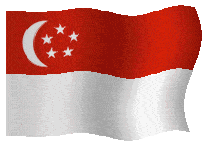While Singapore’s property market as a whole remains firm, industrial properties have recorded price declines, according to data from the Urban Redevelopment Authority (URA).
The all-industrial price index for last quarter dipped 0.6 percent from a 4.5 percent increase in Q1. The index for multiple-user factory space rose 0.5 percent from 185.3 to 186.3, but prices for multiple-user warehouse spaces fell 5.9 percent to 200.6 from the previous 213.2.
As for rentals, multiple-user factory space posted 0.1 percent growth, down from 0.4 percent in Q1. Meanwhile, multiple-user warehouse rentals were down 2.4 percent. As such, the all-industrial rental index fell 0.1 percent compared to a 0.4 percent gain in Q1.
Moving forward, the industrial sector will have a pipeline of 4.436 million sq m in gross floor area (GFA) of factory space.
Last quarter, occupied factory space grew by 139,000 sq m (nett) compared to the 83,000 sq m (nett) hike in Q1.
“On the other hand, the stock of factory space increased by 385,000 sq m (nett) in 2nd Quarter 2013, higher than the increase of 100,000 sq m (nett) in 1st Quarter 2013. The vacancy rate of factory space increased from 7.0 percent at the end of 1st Quarter 2013 to 7.6 percent at the end of 2nd Quarter 2013,” the URA said.
Source: PROPERTYGURU



